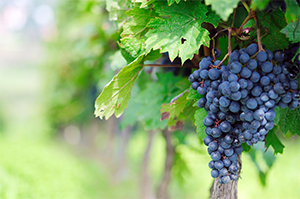 All that Jesus says in the final hours before his arrest (John 13-17) is designed to equip his disciples to fulfill their mission after his departure. Among the things that he addresses is the critical importance of on-going communion with himself. At the heart of his instruction is the remarkable declaration that they will be totally dependant on him for the doing of anything good. In order to convey this truth in a way that will be memorable, the Lord uses the image of a vine and its branches.
All that Jesus says in the final hours before his arrest (John 13-17) is designed to equip his disciples to fulfill their mission after his departure. Among the things that he addresses is the critical importance of on-going communion with himself. At the heart of his instruction is the remarkable declaration that they will be totally dependant on him for the doing of anything good. In order to convey this truth in a way that will be memorable, the Lord uses the image of a vine and its branches.
1. The Familiar Image
“I am the true vine, and my Father is the vinedresser. . . .
I am the vine, you are the branches” (15:1,5).
As on so many occasions, Jesus here uses an image drawn from daily life. The Bible uses the imagery of a vine and its branches to illustrate the relation between God and his people Israel. Here Jesus uses this imagery to illustrate his (and his Father’s) relation to his disciples, who are the true Israel, i.e., the Israel of the New Covenant. There are three parts to this image–the vine, the branches, and the vinedresser. Each has a vital role to play. Later we will consider the role of the Father as the vinedresser. Now we focus on the relation of the vine (Christ) and the branches (his disciples).
There are many things about vines that I do not know, complexities of biochemistry that perhaps even mystify the experts. But an expert’s knowledge of such things is not necessary to understanding our Lord’s use of this image. The analogy is simple, and the lessons are meant to be virtually self-evident.
-Dr. Robert Martin
To read more, click here.
